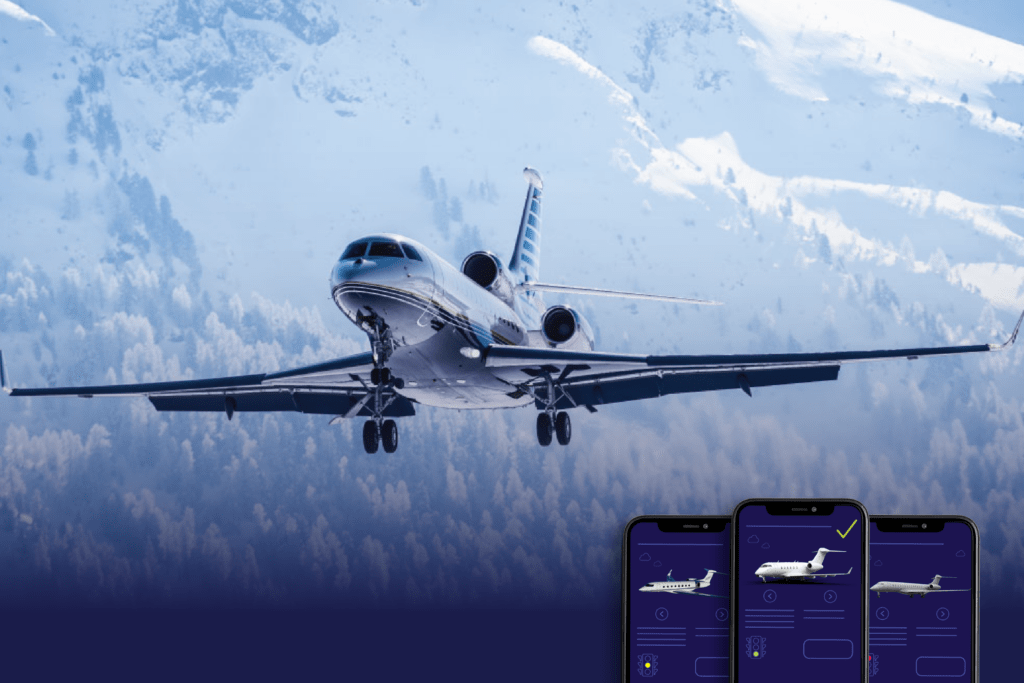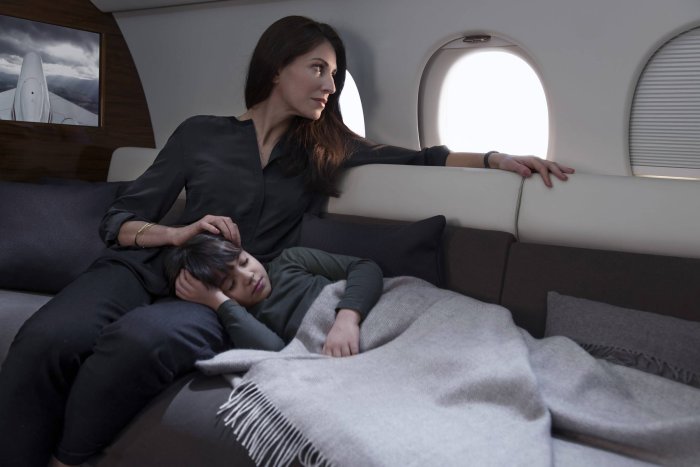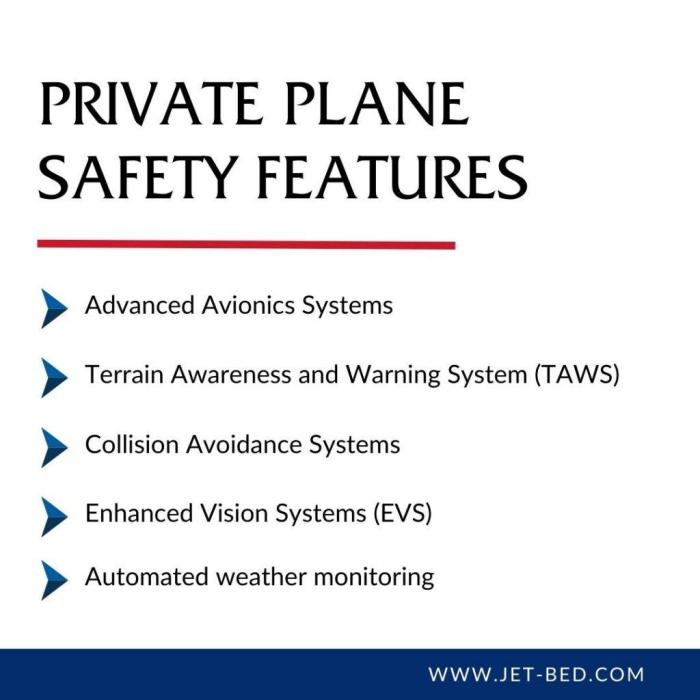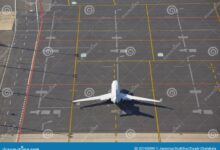How Safe Is Private Jet Travel Compared To Airlines?
How Safe Is Private Jet Travel Compared to Airlines? This question not only sparks curiosity but also dives into the realm of aviation safety, where every flight is governed by strict regulations and protocols. While both private jets and commercial airlines strive for the highest safety standards, their approaches and operational practices differ significantly, leading to varied perceptions among travelers.
From the oversight of aviation authorities to the specific maintenance practices that ensure airworthiness, understanding these nuances helps paint a clearer picture of the actual safety landscape in both modes of travel. With statistical comparisons and individual experiences, this exploration reveals how private aviation is both a luxurious convenience and a safe travel option.
Safety Regulations in Aviation
The safety regulations governing aviation are designed to ensure the highest standards of safety for both private jets and commercial airlines. These regulations are established by various aviation authorities worldwide and play a crucial role in maintaining the integrity and safety of air travel. While there are similarities in these regulations, notable differences exist, particularly in terms of enforcement and certification processes.Aviation authorities, such as the Federal Aviation Administration (FAA) in the United States and the European Union Aviation Safety Agency (EASA) in Europe, oversee and enforce safety regulations across the aviation industry.
Their primary role includes setting safety standards, conducting inspections, and certifying aircraft and operators. The FAA, for instance, is responsible for regulating all aspects of civil aviation in the U.S., including private and commercial operations, while EASA works to ensure safety across member states in Europe.
Certification Processes in Aviation
The certification processes for private jets differ from those for commercial airlines, reflecting the unique operational contexts of each sector. Understanding these processes is crucial for appreciating the level of safety ensured by different types of air travel.
1. Aircraft Certification
Commercial airlines must adhere to stringent certification processes, which include comprehensive safety assessments, testing, and adherence to design regulations.
Private jets, while also required to meet safety standards, often experience a more streamlined certification process, which can vary significantly depending on the size and type of the aircraft.
2. Pilot Certification
Commercial airline pilots undergo rigorous training, including extensive flight hours, simulator training, and examinations to become certified for specific aircraft types.
Private jet pilots may also require significant training; however, the requirements can be less stringent, particularly for smaller jets where the operational demands are lower.
3. Operational Regulations
Commercial airlines operate under stricter operational regulations, including mandatory maintenance schedules and reporting requirements.
Private jet operators enjoy more flexibility but are still bound by maintenance requirements set forth by aviation authorities.
The emphasis on safety regulations serves to protect passengers, crew, and aircraft in all sectors of aviation.
The differences in certification processes highlight the varying degrees of regulatory oversight that exist in private versus commercial aviation. Overall, while both sectors are subject to safety regulations, commercial airlines typically face a more comprehensive framework, reflecting their larger scale and the greater number of passengers they transport.
Safety Records and Statistics
Private jet travel and commercial airlines both prioritize safety, yet their accident rates and historical performance reveal distinct trends. By examining these factors, we can gain a clearer picture of how safe private jet travel is compared to commercial aviation.Accident statistics indicate that commercial airlines generally maintain a stronger safety record. According to the National Transportation Safety Board (NTSB), commercial aviation has an accident rate of approximately 0.07 accidents per 100,000 flight hours, while private jets experience a higher rate, estimated at around 0.4 accidents per 100,000 flight hours.
This disparity highlights the need for a deeper understanding of the safety dynamics at play in both sectors.
Historical Data on Safety Incidents
Historical analysis of safety incidents underscores significant differences in the safety profiles of private jets versus commercial airlines. Data from the Aviation Safety Network shows that between 2000 and 2020, private jets were involved in over 300 accidents, resulting in approximately 60 fatalities. In contrast, commercial air travel recorded less than 15 major accidents with fatalities during the same period.
The following comparative statistics illustrate key aspects of safety incidents over the years:
| Year | Private Jet Accidents | Commercial Airline Accidents | Private Jet Fatalities | Commercial Airline Fatalities |
|---|---|---|---|---|
| 2000 | 25 | 9 | 10 | 400 |
| 2010 | 30 | 15 | 12 | 750 |
| 2020 | 20 | 5 | 5 | 50 |
Over the years, trends indicate that safety incidents in private aviation have shown fluctuations. While the overall number of accidents has decreased in recent years, the private jet community still experiences a higher ratio of accidents compared to commercial airlines.
Advancements in safety technology and stringent regulations are essential in driving improvements in private aviation.
Recent trends reveal that private aviation has benefited from enhanced safety measures, including improved training for pilots, better maintenance protocols, and the integration of advanced avionics systems. The introduction of safety management systems (SMS) in private aviation has also contributed to identifying and mitigating risks, leading to a gradual improvement in safety performance. The commitment to safety in private aviation continues to evolve, suggesting a positive trajectory towards reducing accident rates and enhancing overall flight safety.
Maintenance and Operations
The safety and reliability of aircraft are fundamentally linked to how well they are maintained and operated. In the context of private jets versus commercial airlines, there are notable differences in maintenance protocols and operational practices that can impact overall safety. Understanding these differences provides insight into the safety landscape of private jet travel compared to traditional airlines.
Maintenance Protocols for Private Jets and Airlines
Maintenance is a critical component of aviation safety. Both private jets and commercial airlines are subjected to stringent maintenance protocols, but the specifics can vary significantly. Commercial airlines must adhere to comprehensive regulatory requirements set by aviation authorities, which dictate regular inspections, maintenance schedules, and record-keeping. These airlines often have dedicated maintenance teams and facilities, ensuring that their fleets are consistently monitored and serviced.In contrast, private jets, while also required to follow regulatory maintenance guidelines, may have more flexible protocols due to their less rigid operational scale.
Owners of private jets might choose to implement personalized maintenance schedules that reflect their specific flying habits and usage patterns. This flexibility can lead to enhanced care for individual aircraft, as owners may directly invest in higher-quality maintenance services. However, it can also lead to variability in how well different jets are maintained, depending on the owner’s commitment to upkeep.
Operational Practices in Private and Commercial Aviation
Operational practices between private and commercial aviation also differ significantly, impacting safety. Commercial airlines operate under a highly regulated framework that includes standard operating procedures (SOPs) designed to maximize safety and efficiency. Pilots receive extensive training and must adhere to strict protocols for takeoffs, landings, and in-flight emergencies.Private jet operations, on the other hand, can exhibit a more relaxed environment.
While private pilots are required to maintain licenses and certifications, the operational flexibility allows for less standardized procedures. Private flights often have fewer layers of oversight compared to commercial flights, which can lead to variations in how safety measures are implemented. However, many private jet operators emphasize safety and might adopt the same high operational standards as commercial airlines, depending on the company and pilot experience.
Impact of Crew Training and Experience on Safety
The training and experience of flight crews play a significant role in aviation safety. In commercial airlines, pilots undergo rigorous training programs that include simulator exercises, recurrent training, and strict adherence to safety protocols. This extensive training prepares them to handle various in-flight situations effectively.In the realm of private jet travel, the level of training can vary greatly depending on the operator.
Some private jet pilots may possess extensive commercial flying experience, while others may have less. This variability can affect safety, as experienced pilots are generally better equipped to manage emergencies and adverse conditions. Moreover, some private jet operators prioritize hiring highly qualified crews, reflecting a commitment to safety that rivals that of commercial airlines.In summary, while both private jets and commercial airlines follow safety regulations and maintenance protocols, the execution of these practices can differ.
The operational flexibility in private aviation can enhance individual aircraft maintenance but may also introduce variability in safety standards. The experience and training of crews in both sectors are crucial factors that directly correlate with the overall safety of air travel.
Passenger Experience and Safety Perception
The safety perception of private jet travel compared to commercial airlines varies significantly among passengers. Many travelers consider private jets to be safer due to the level of control and exclusivity they offer. This section explores the different perspectives surrounding safety in private aviation and how passenger demographics influence these views.
Perceived Safety of Private Jet Travel
The perception of safety in private jet travel often stems from the belief that fewer people are on board, which reduces the complexities and potential risks associated with larger commercial flights. Passengers frequently cite the following reasons for feeling safer in private jets:
-
Personalization of Safety Measures:
Private jet operators can tailor safety protocols to the specific needs of passengers, ensuring a higher level of attention and care.
-
Direct Access to Airports:
Private jets often operate from smaller airports, reducing exposure to crowded terminals and minimizing the risk of accidents during taxiing and takeoff.
-
Immediate Medical Attention:
In emergencies, private jets can land at closer facilities, offering more immediate medical support than larger airlines.
Impact of Privacy and Exclusivity on Safety Perception
The privacy afforded by private jets plays a significant role in enhancing perceived safety among travelers. This exclusivity not only creates a sense of comfort but also elevates the overall experience. Key aspects include:
-
Uninterrupted Service:
Passengers enjoy uninterrupted service from flight attendants dedicated solely to their comfort and safety.
-
Controlled Environment:
The confined space of a private jet allows for a controlled environment where passengers can avoid potential health risks associated with larger crowds.
-
Customizable Travel Experience:
Passengers can select their crew and customize their travel experience, leading to increased trust in safety measures.
Demographic Views on Private Aviation Safety
Different passenger demographics have varying perceptions of safety in private aviation. Factors such as age, travel frequency, and purpose of travel play a crucial role in shaping these views. For instance:
-
Business Travelers:
Frequent business travelers often prioritize efficiency and may view private jets as a safer option due to time saved and fewer touchpoints with others.
-
Families and Leisure Travelers:
Family travelers may prioritize safety for their children, often feeling reassured by the privacy and reduced exposure to illness.
-
Older Adults:
Senior travelers often prefer private jets for their comfort and ease of travel, which they associate with a higher level of safety.
The overall perception of safety in private jet travel continues to evolve, driven by individual experiences and the changing landscape of aviation safety standards. The combination of privacy, exclusivity, and tailored service significantly contributes to the favorable views many passengers hold regarding private aviation safety.
Emergency Procedures and Response
In the world of aviation, emergency preparedness is paramount, and this is true for both private jets and commercial airlines. However, the procedures and responses can vary significantly between the two. Understanding these differences can help passengers feel more secure about their travel choices, especially in critical situations.In the case of private jets, emergency procedures are often more customized and can be tailored to the specific aircraft and its crew.
This flexibility allows for a more agile response to in-flight emergencies compared to commercial airlines, which follow standardized protocols across all flights. Private jet crews typically undergo rigorous training tailored to the unique characteristics of their aircraft, allowing them to react swiftly and appropriately to various emergency scenarios.
Emergency Response Times
The response times in emergencies can differ greatly between private jets and commercial airlines due to several factors, including the size of the crew, the nature of the operations, and flight schedules. Private jets usually have a smaller crew, which means that decision-making can be quicker and actions can be taken without the need for extensive coordination with a larger team.
Rapid Decision-Making
Private jet crews can make immediate decisions without waiting for clearance from air traffic control or higher-ups. This can lead to quicker diversions or emergency landings if necessary.
Tailored Emergency Protocols
Many private jet operators develop specific emergency protocols for individual aircraft, which can expedite the response time in critical situations as crew members are trained on the exact configurations and systems of their specific plane.
Access to Smaller Airports
Private jets can land at smaller airports that may be closer to the site of an emergency, allowing for faster access to medical assistance or other critical services.
In-Flight Emergency Management
Private jets also manage in-flight emergencies differently than commercial airlines, often leading to more individualized care and faster response. Here are a few examples of how this manifests:
Direct Communication with Flight Crew
Passengers on private jets generally have more direct access to the crew, allowing them to communicate any issues or concerns immediately. This direct line can facilitate quicker interventions and reassurance during emergencies.
Tailored Safety Briefings
Before takeoff, private jet flights often include personalized safety briefings, which can cover specific emergency procedures that are relevant to the passengers and the aircraft. This personalized approach ensures that passengers are well-informed about safety measures.
Medical Equipment and Personnel
Many private jets are equipped with advanced medical kits and may even have crew members trained in emergency medical response. This capability allows for better handling of medical emergencies in-flight, providing immediate care before landing.
“The ability to customize emergency response protocols on private jets often leads to faster and more efficient management of in-flight emergencies.”
Overall, while both private jets and commercial airlines are subject to strict safety regulations, the inherent flexibility and personalized approach of private aviation can provide unique advantages in emergency situations. Understanding these differences allows travelers to make informed choices and enhances their confidence in the safety of their journeys.
Health and Safety Protocols

Source: virtualhangarmedia.com
In the realm of private jet travel compared to commercial airlines, health and safety protocols play a significant role in ensuring passenger well-being. With recent global health crises, such as the COVID-19 pandemic, the aviation industry has made substantial adjustments to its health protocols, and private jets offer unique advantages in this regard. Understanding these measures can illuminate the differences in how both travel modes prioritize passenger safety and comfort.
The implementation of health and safety protocols varies significantly between private jets and commercial airlines, with private aviation often allowing for more personalized measures that cater to individual preferences. Both sectors have adopted stringent health guidelines, especially during health crises, but the scope and execution of these protocols can differ substantially.
Implementation of Health Protocols
Private jets typically offer an environment where health and safety protocols can be tailored to individual passengers. Key factors include:
- Customizable Health Checks: Private jet operators can implement customized pre-flight health checks, allowing passengers to provide health declarations or undergo testing before boarding. This personalized approach can enhance confidence in safety measures during health crises.
- Enhanced Cabin Cleaning: Private jets often have the flexibility to employ advanced cleaning protocols, utilizing hospital-grade disinfectants and ensuring thorough sanitation of high-touch surfaces. This can be particularly vital during a pandemic, where maintaining a clean environment is paramount.
- Reduced Passenger Interaction: The layout of private jets allows for fewer passengers, minimizing contact. This reduced interaction contributes to a safer environment, making it easier to maintain social distancing, which is often challenging in commercial flights.
- Air Filtration Systems: Advanced HEPA filtration systems are commonly employed in both private jets and commercial airlines, but private aircraft may have newer technology tailored to ensure clean cabin air. The maintenance of these systems is often more stringent, allowing for a consistently safe air quality.
The measures taken during health crises have also evolved with the changing landscape. During the COVID-19 pandemic, private jet operators implemented additional procedures such as:
- Health Screening for Crew: Flight crews of private jets undergo regular health screenings, including temperature checks and health assessments, ensuring that only healthy personnel are in contact with passengers.
- Personal Protective Equipment (PPE): Crew members on private jets are often required to wear PPE, including masks and gloves, which can also be tailored to the preferences of the passengers for added comfort and assurance.
- Contactless Services: Private jet services often provide contactless boarding and catering options, allowing for a seamless travel experience without unnecessary exposure to others.
The management of cabin environments also differs between private jets and commercial airlines. Private jets frequently feature:
- Control Over Cabin Conditions: Passengers in private jets can often control cabin temperature, lighting, and air circulation, enhancing overall comfort and health safety.
- Personalized Amenities: Customized amenities can be provided based on individual health requirements, such as hypoallergenic bedding or specific dietary options, which may not be as readily available on commercial flights.
- Direct Access to Outside Air: Many private jets have the capability to use outside air for cabin ventilation, significantly reducing the risk of airborne transmission of pathogens compared to the recirculated air often found in commercial airlines.
These health and safety protocols highlight how private jet travel offers a unique approach to ensuring passenger safety, particularly during health crises. The ability to customize safety measures and maintain a high standard of cabin hygiene makes flying privately an attractive option for those prioritizing health and safety.
Financial Implications of Safety

Source: squarespace-cdn.com
Maintaining safety standards in aviation is critical, yet it comes with substantial financial implications for both private jet operators and commercial airlines. Understanding these costs is essential for evaluating the overall safety and affordability of air travel options available to passengers. The financial landscape of safety within aviation encompasses several aspects, including maintenance, insurance, and the broader economic impact of safety investments.
Private jet operators often face higher costs due to stricter regulatory requirements and the need for bespoke maintenance practices. In contrast, airlines can spread their safety-related expenses across a larger number of flights and passengers.
Costs of Maintaining Safety Standards
The costs associated with maintaining safety standards reveal a significant financial burden for private jet operators. Unlike commercial airlines, which benefit from economies of scale, private jets incur higher costs on a per-flight basis. These costs can be broken down into key components:
- Maintenance and Inspection: Private jets require frequent inspections and maintenance checks in compliance with aviation regulations. These checks can cost tens of thousands of dollars annually per aircraft, as they often involve specialized technicians and parts that are not mass-produced.
- Training and Certification: Pilots of private jets often undergo extensive and recurrent training to maintain their certifications. This training is crucial for operating complex aircraft and can cost hundreds of thousands of dollars over a pilot’s career.
- Quality of Parts: Private jet operators tend to use high-quality, often custom-made parts, which are more expensive than those used by commercial airlines that can purchase in bulk.
Insurance Rates for Private Jet Operators
Insurance rates are a vital aspect of the financial implications related to safety in aviation. Typically, private jet operators face higher insurance premiums compared to airlines. This difference is attributed to various factors:
- Risk Assessment: Insurance companies assess the risk associated with private jet travel differently than commercial flights. The perceived risk is higher for private jets due to less standardized operational practices.
- Claims History: The historical claims data for private jets tend to reveal a higher frequency of incidents, resulting in elevated premiums to cover potential payouts.
- Operational Profiles: Private jets often operate in diverse environments and conditions, which can increase risk and consequently, insurance costs.
Impact of Safety Investments on Travel Costs
Investing in safety not only enhances the security of aviation operations but also influences overall travel costs. For both private jets and airlines, these investments can significantly affect pricing structures:
- Enhanced Safety Measures: While initially costly, investments in advanced safety technologies and training can reduce the likelihood of incidents, ultimately lowering insurance premiums over time.
- Customer Willingness to Pay: Passengers may be willing to pay a premium for flights that emphasize safety. This willingness can allow operators to maintain higher profit margins while ensuring compliance with safety standards.
- Long-term Savings: Proactive safety investments can result in long-term savings by mitigating the need for costly incident-related repairs and legal fees associated with accidents.
Investments in safety are not just an obligation but a strategic approach to enhancing operational longevity and customer trust in the aviation industry.
Case Studies and Real-Life Incidents

Source: jet-bed.com
Private jet travel has long been regarded as a luxurious and convenient mode of transportation. However, the safety of private jets compared to commercial airlines is a topic that often generates discussion, particularly when incidents occur. Analyzing notable case studies and real-life incidents helps illuminate the safety landscape inherent in both sectors. By examining these events, we can better understand the implications they carry for traveler safety perceptions and regulatory frameworks within aviation.
Notable Private Jet Incidents
Several high-profile incidents have highlighted the risks associated with private jet travel. One significant case is the tragic crash of a Bombardier Challenger 600 in 2008, which resulted in the loss of all aboard. The aircraft was attempting to land during severe weather conditions, and subsequent investigations revealed that pilot error and inadequate training were contributing factors. This incident underscored the need for stringent pilot training and operational standards within the private aviation sector.
Another example is the crash of a Gulfstream G650 in 2019, which involved a complex series of technical failures. The aircraft experienced multiple system failures during a routine flight, leading to an emergency landing. Although there were no fatalities, the incident raised concerns regarding the reliability of maintenance practices and adherence to safety protocols in private aviation.
High-Profile Airline Accidents
In contrast, commercial airline incidents such as the 2001 American Airlines Flight 11 crash have had profound implications for public safety perceptions. The tragic event, part of the September 11 attacks, not only changed the aviation industry but also reshaped travel security protocols globally. Following this incident, there was increased scrutiny on airline safety measures, leading to the implementation of more rigorous security screenings and passenger identification checks.
Another significant airline accident was the 2014 crash of Malaysia Airlines Flight MH370, which remains a mystery to this day. The disappearance led to widespread public concern about the safety of airline travel. Investigations revealed failures in tracking technology and emergency response protocols, prompting airlines and regulatory bodies to rethink safety measures and transparency in incident reporting.
Lessons Learned from Incidents
Comparing the lessons learned from incidents in private and commercial aviation reveals important insights. Both sectors have specific safety protocols, but incidents can expose vulnerabilities that necessitate change. Below are key takeaways from both private and commercial aviation incidents:
- Importance of Pilot Training: Both sectors have faced issues related to pilot competency. Incidents have shown that enhanced training and regular assessments are crucial for safety.
- Maintenance Standards: The reliability of maintenance practices has been a concern in both private jets and commercial airlines. Ensuring adherence to rigorous maintenance schedules can mitigate risks.
- Emergency Preparedness: Preparedness for emergencies is vital. Both sectors must regularly evaluate and update their emergency response protocols to handle unexpected situations effectively.
- Communication and Transparency: Transparency in reporting incidents fosters trust among passengers. Both private and commercial aviation can enhance safety perceptions through open communication about safety practices and incident investigations.
The differences in handling safety between private jets and commercial airlines can shape public perception. Notably, incidents in both areas necessitate ongoing improvements in safety protocols that prioritize passenger protection and highlight the significance of effective operational practices.
Conclusion
In summary, assessing how safe private jet travel is compared to airlines involves more than just examining accident statistics. It encompasses a detailed look at regulation adherence, operational protocols, and passenger perceptions. Whether you’re weighing the privacy and exclusivity of a private jet against the familiarity of commercial flights, the safety narrative is rich and multifaceted, encouraging travelers to consider what truly matters to them.
Common Queries
Are private jets safer than commercial airlines?
Private jets generally have fewer accidents, but safety largely depends on maintenance, pilot experience, and regulatory compliance.
What are the common safety measures for private jets?
Common safety measures include rigorous maintenance checks, experienced pilots, and adherence to safety regulations set by aviation authorities.
How does passenger demographic affect safety perception?
Different demographics may prioritize privacy and comfort, leading to varying perceptions of safety based on past experiences and societal influences.
What is the impact of emergency procedures in private aviation?
Emergency procedures in private aviation are often more tailored, with quicker response times due to the smaller size of the aircraft and crew.
How do health protocols differ between private jets and airlines?
Private jets often offer more personalized health protocols, allowing for tailored cabin environments and sanitation measures compared to commercial airlines.









